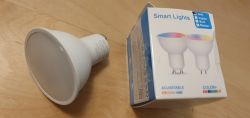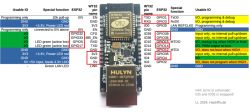valek333 wrote: how best to make an installation to control blinds heating lighting
.
You give very few relevant details - e.g. what kind of roller shutters and their control, what kind of heating, what kind of lighting, the basic parameters of the house - the number of elements to be controlled or receive data transmission.
Another issue is your expectations, requirements and what I would call "dreams". - perhaps some of these can be realised or made easier to realise in the future by planning some solutions right away.
In general, like Col. Erbit, I would not combine the alarm function with the "smart home" within the control panel. Rather, I would add the alarm and monitoring functions to the "smart home" devices - as a complement to the alarm system - motion sensors, cameras, etc.
In terms of wiring - the future is more likely to be wireless connections. It is worth thinking this through and considering what will require wired control and what can successfully use radio connectivity.
For example, relatively cheap on systems such as sonoff and similar systems, many interesting and useful solutions can be implemented. For example, light control - the simplest option - Sonoff TX type touch switches (NOTE: they require L and N - when installing a new system, it is worth taking this into account) - can work as ordinary touch switches (without a connection).
But if you install a free app - you can control your phone/tablet (even when away from home) or Hub or speaker from google. Plus basic scenarios and you already have automation elements.
On top of that you integrate with Google Home and you can use the google assistant - "OK Google, turn on the light...". Not enough? E.g. Tiny + Hass.io and integrations with what you have + Node-Red and you have an activity for long winter evenings - blocks for adults

.
Similarly, heating control - you have furnace controls, sensors, thermostatic heads (programmable and controlled via WiFi), etc.
Roller shutter control can also be done differently than just 'up/down'.
With other installations, it is also worth thinking about automation and making or enabling the future installation of - for example - solenoid valves (which shut off water or gas if flooding or gas or smoke is detected).
Whether you want to dabble in automation at the moment or not, it is worth doing what will be difficult to access later on with flair. The number of devices and their prices mean that we are increasingly limited not by the components available but by our imagination

.
From a practical point of view - it is worth using deep cans (in the future you can insert a control element there and you can already, for example, switch off the iron with your phone on the way to work).
Even if you don't intend to use certain solutions at the moment - but will want to in the future - it's worth checking what the installation requirements are.
And finally the issue of networking - here it is worth thinking about what and where - routers/cables/sockets.






